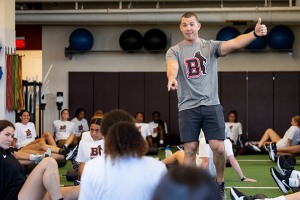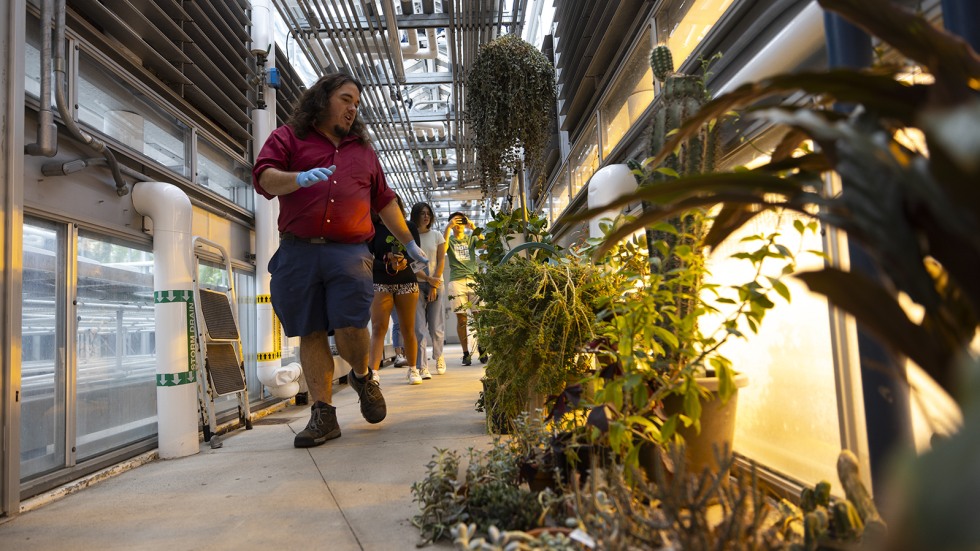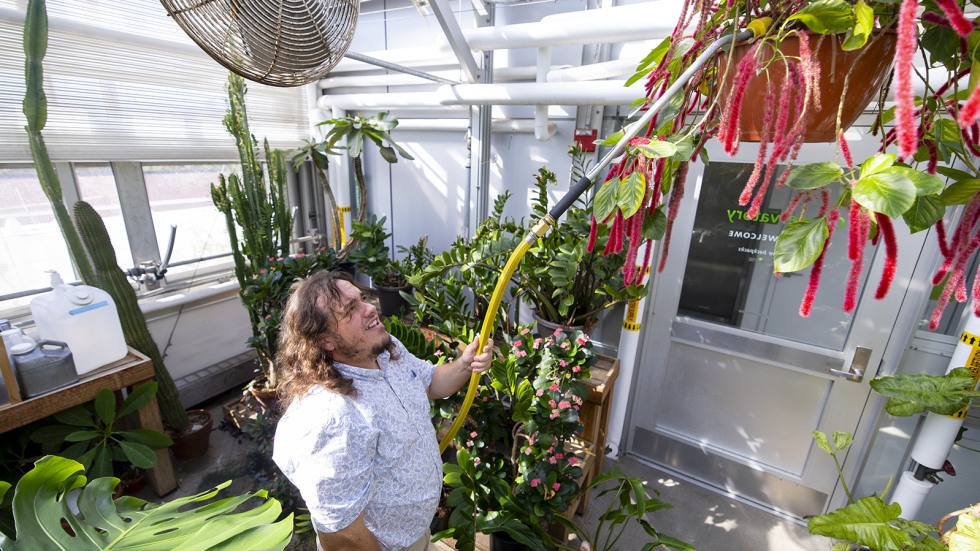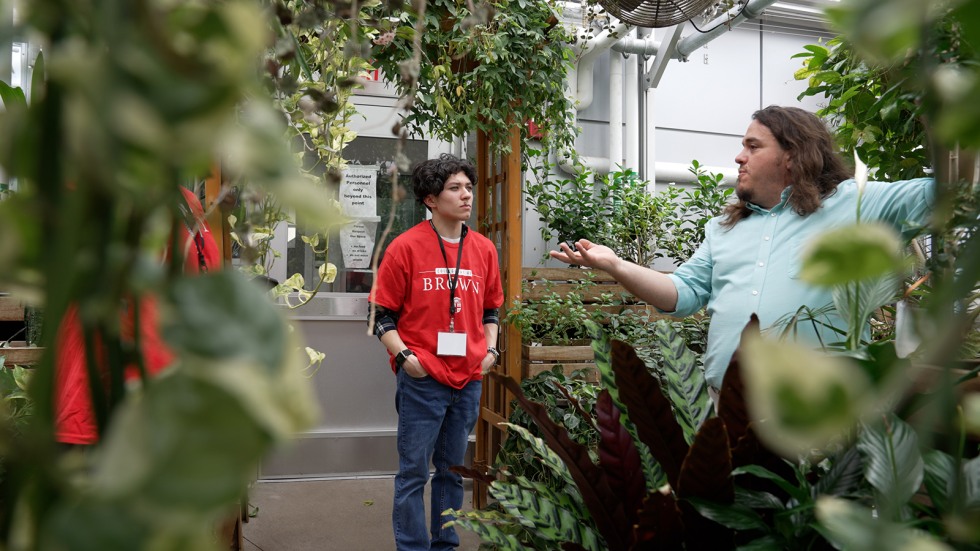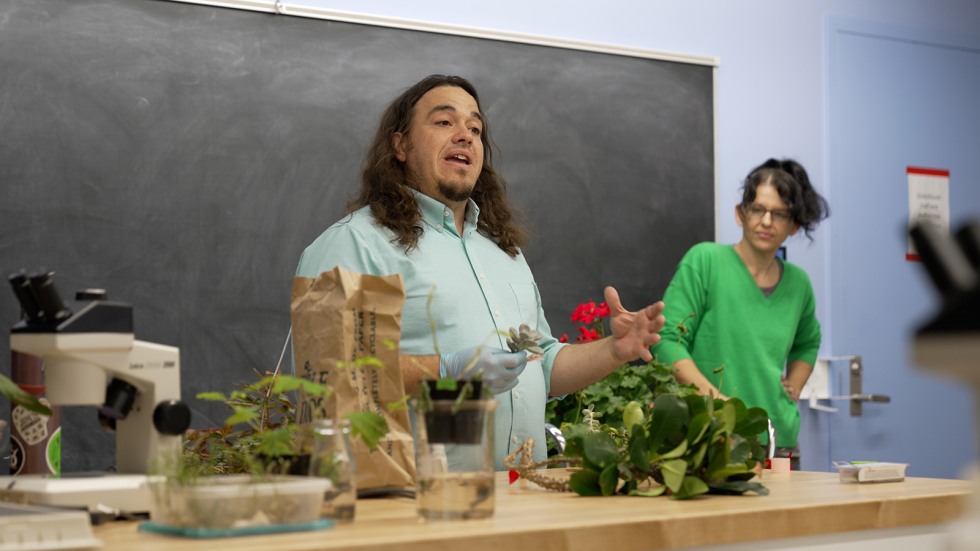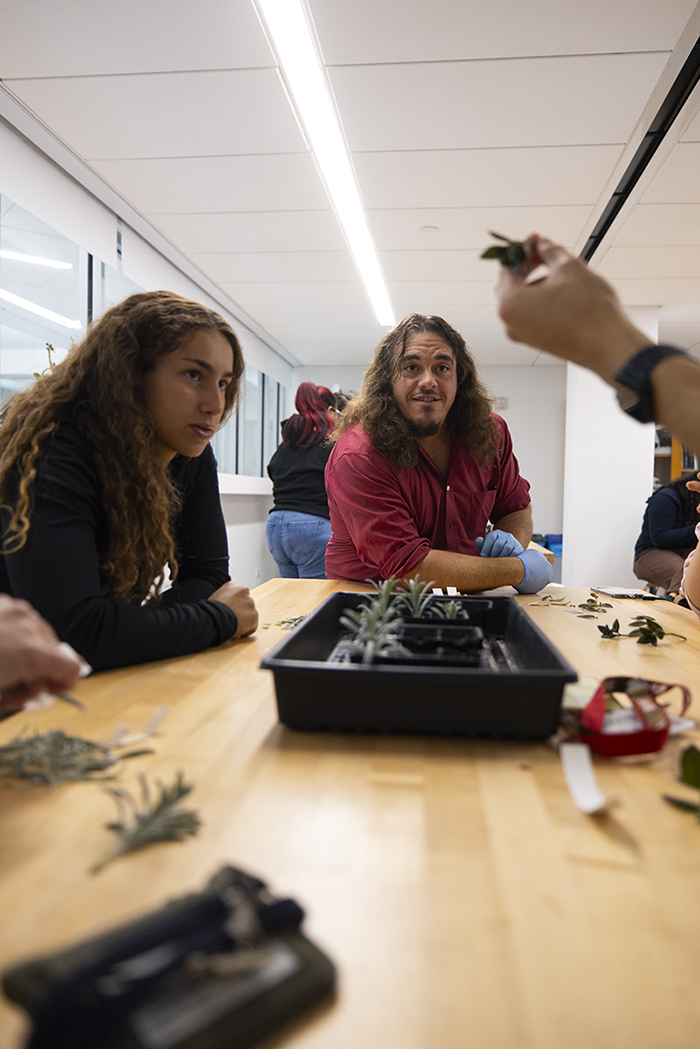PROVIDENCE, R.I. [Brown University] — As Brown University’s research greenhouse manager, Nicholas Vasques oversees day-to-day operations of the Plant Environmental Center, a suite of six computer-controlled research greenhouses and an 1,800-square-foot conservatory atop 85 Waterman St. — home to the Institute at Brown for Environment and Society — on Brown’s campus.
But his work extends well beyond plant care.
Since 2019, the New Bedford, Mass., native has drawn on his background in agriculture to expand the center’s tropical plant collection, rethink how plants grow within the greenhouses — including creative use of vertical space — and mentor students while supporting faculty research and teaching. He’s also opened the greenhouse doors to the Providence community, welcoming visitors to campus for public workshops and plant care demonstrations and mentoring local students through events like College Day at Brown.
In this Q&A, Vasques shared what first sparked his interest in horticulture, how his role at Brown has evolved, and why working with students, researchers and members of the Providence community inspires him.
Q: What drew you to this field — and to Brown?
My passion for horticulture started with an experience in Iceland. In 2009, my best friend invited me to spend a month working on an afforestation project in an ecovillage in Sólheimar. When I came home, I immediately wanted to find education that had to do with horticulture and growing production, which I studied at the Stockbridge School of Agriculture at UMass Amherst.
Once I left school, I went into large-scale crop production. After a while of doing that work, I found a job opening here. I chose Brown because I wanted to work in a higher education environment, and Brown’s reputation for excellence and inclusivity is unmatched, so I definitely wanted to be a part of this community.
